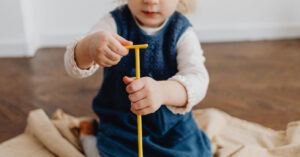
15 Best Toys for Building Independence — That Aren’t Boring or Overhyped
From magnetic tiles to dolls and pretend kitchens, these 15 toddler toys are actually worth the shelf space — and designed to encourage solo play and confidence.
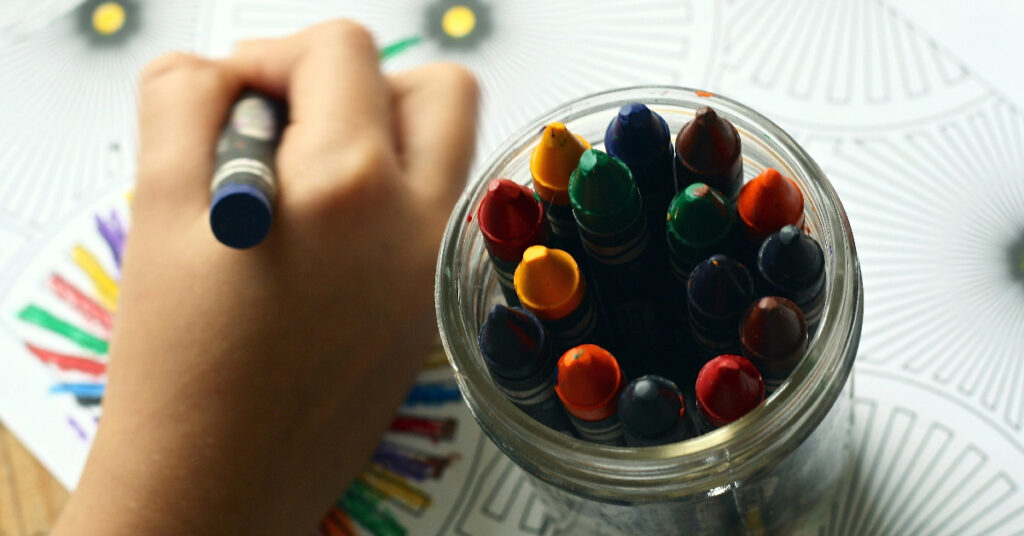
Screen free play ideas sound great in theory… until your toddler’s yelling for the iPad before you’ve had coffee, the baby’s chewing on your shoe, and your brain is fried from saying “No screens” 17 times before 8am.
Screens are convenient. They work. They keep little humans still — and sometimes, that’s all we need. But when screens start creeping into every free moment, we miss out on something huge: play that actually builds your toddler’s brain.
That’s where screen free play ideas come in — the kind that don’t require you to constantly entertain, and don’t involve cutting up 73 pieces of craft paper. We’re talking simple, flexible, open ended activities that spark your child’s imagination and help them play on their own (so you can sip your coffee in peace).
In this post, you’ll get:
10 real-mum-approved screen free play ideas for toddlers
The science of why screen time isn’t neutral — and what to do instead
Practical tips for reducing screens without total toddler rebellion
Ways to make open ended play part of your daily routine (without doing more)
Because this isn’t about perfection. It’s about giving your child more of what their brain really needs — and giving yourself a break in the process.
Not every screen free play idea is created equal — and just because your toddler isn’t watching Bluey doesn’t mean their play is doing the heavy lifting. So let’s clear something up:
Screen free play ≠ busywork.
A true screen free play idea the kind that benefits your toddler’s brain, focus, and emotional development — is open ended play.
Screen free play is any activity your child can engage in without a digital device, where they lead the play instead of being entertained by a screen or an adult.
The best kind is:
Child-led
Imaginative
Flexible in outcome
Repeatable, with variations
Driven by curiosity, not a script
Open ended play is the gold standard here. It’s messy. It’s magical. It’s where your toddler builds real-life skills without you having to plan a single thing.
Just so we’re clear, here’s what isn’t really screen free play:
🚫 Colouring sheets with exact instructions
🚫 Learning apps with flashing buttons
🚫 Crafts where you have to supervise every step
🚫 Toys that talk, sing, or walk them through “correct” outcomes
These might be fine in small doses — but they don’t encourage creativity, independence, or that juicy brain development we’re after.
✅ Offline
✅ Open ended
✅ Driven by your toddler’s imagination
✅ Something they can do without you guiding every second
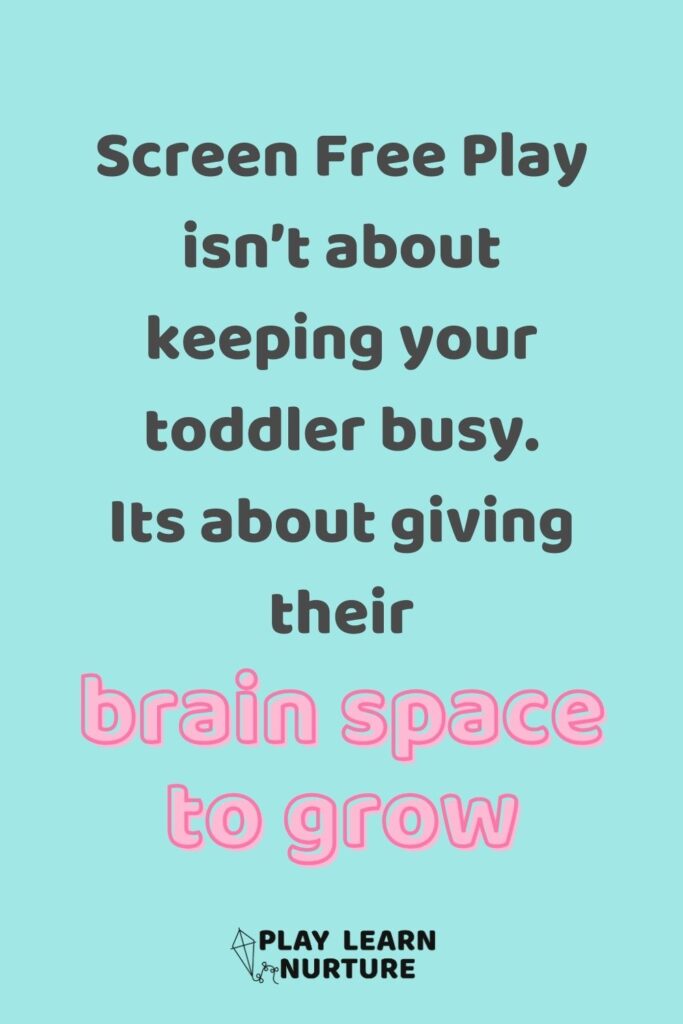
Look, this isn’t about banning every screen or becoming one of those Pinterest mums who acts like screens are evil. They’re not. But the truth is… they’re not neutral, either.
When screen time becomes the default, especially during those early developmental years, it starts to replace something way more important: imagination.
Studies show that excessive screen time in toddlers is linked to:
Shortened attention spans
Language delays
Poorer emotional regulation
Decreased creative thinking
Reduced sleep quality
And even increased behavioural challenges
A 2019 study published in JAMA Pediatrics found that higher screen time at age 2 was associated with poorer performance on developmental screening tests at age 3 and 5.
Translation? The more screens fill the silence, the fewer chances your toddler has to figure things out for themselves.
Screens are passive. They entertain for your child. But open ended, screen free play? That’s where your toddler becomes the director, the builder, the storyteller, the problem solver.
And that shift — from passive to active — is where the magic happens:
That’s where executive function starts developing
That’s where language begins to explode
That’s where imagination and emotional control take root
So no, screens aren’t the enemy. But when they push out screen free play entirely? That’s when the red flags pop up.
You don’t need to go screen-free overnight. You just need a few screen free play ideas that actually work. That your toddler loves. That you can roll out on a Tuesday when you’re running on crumbs and cold coffee.
And that’s what’s coming next.
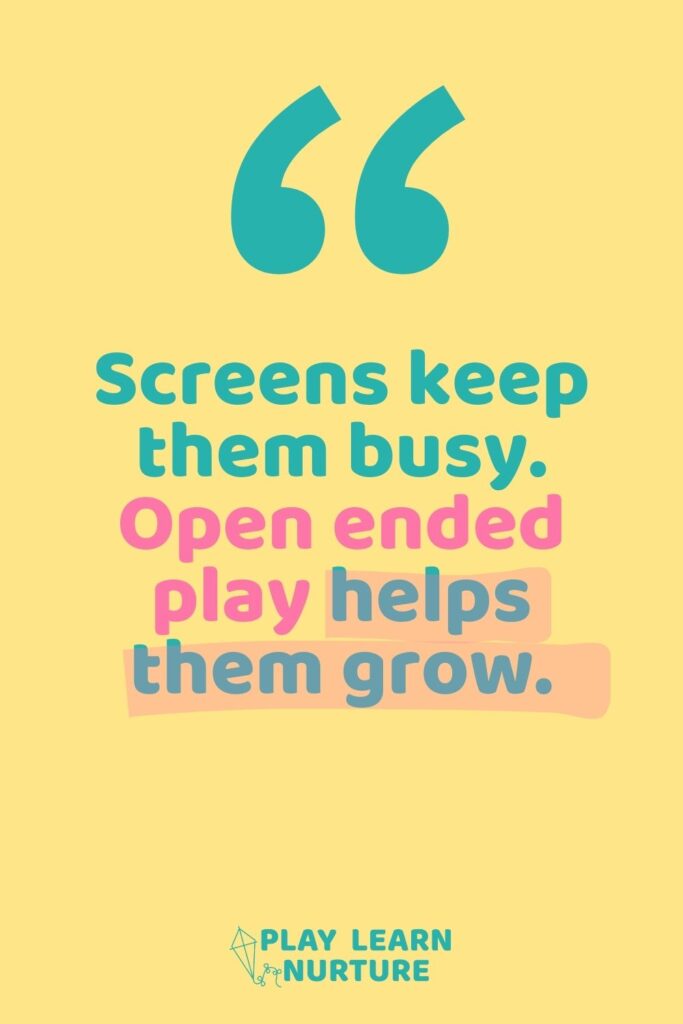
This isn’t a list of complicated Pinterest crafts or activities that require a glue gun, a laminator, and a two-hour nap block. These are screen free play ideas that are toddler-tested, real-life approved, and most importantly — open ended.
Let your toddler build, crash, rebuild, and invent their own weird little magnetic universes. No instructions. No “right” way. Just colourful chaos.
Why this screen free play idea works:
It’s open ended, meaning there’s no single outcome. Your child can build a zoo, a garage, or a spaceship — all in one session. It promotes spatial awareness, motor skills, creativity, and focus.
Real-mum tip:
Sit nearby and throw out random prompts like “What if this was a castle for ants?” then walk away. Boom — engagement level: unlocked.
Loose parts = junk that turns magical. Use pegs, lids, spoons, pompoms, rings, old makeup brushes — anything safe and random.
Why it works:
This screen free activity is brilliant because it encourages sorting, matching, pretend play, and experimenting. It’s different every single time, which means it doesn’t get old fast.
Read more: Coming soon -Loose Parts Play Ideas for Big Imaginations
Rotate themes like “vet”, “cafe”, or “post office” using stuff from your kitchen drawers, recycling bin, or handbag. Pop them in a box, pull them out when boredom hits.
Why it works:
Dramatic play builds emotional literacy, storytelling, and independence. And because it’s screen free and self-led, it lets your child explore without constant supervision.
Pro tip:
Use old bandages, takeout menus, or junk mail. Toddlers LOVE “real” stuff.
Current Favourite for my 2.5year old – grab from Amazon
Throw all the soft toys in a laundry basket, say they’re trapped, and let your toddler “rescue” them using tongs, spoons, or their hands.
Why it works:
It taps into role play and gross motor movement — two key ways toddlers learn through play. Plus, it encourages problem solving and empathy.
Give them a big cardboard box. Add crayons. Walk away.
Why it works:
This is the OG screen free play idea — timeless, cheap, and endlessly creative. A box can become a rocket ship, house, spaceship, or tunnel to a dinosaur jungle. No app can compete with that.
This Makedo Cardboard construction tool kit is an absolute game changer for cardboard play > Grab some from Amazon here
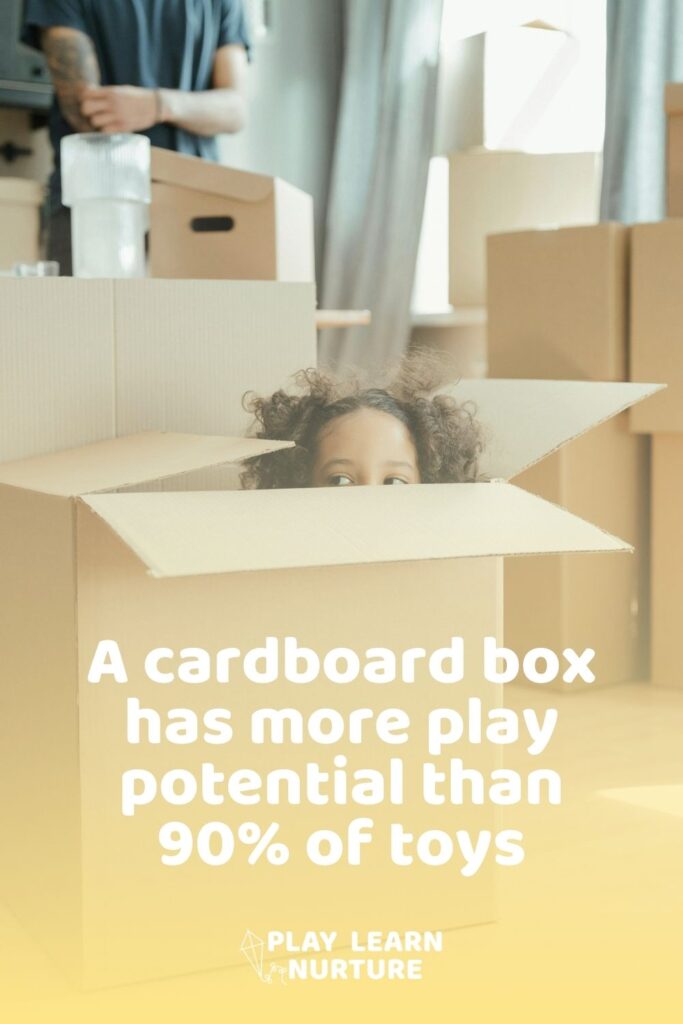
Grab bowls and small objects (blocks, socks, cut-up sponges) and let them sort by colour using tongs or their fingers.
Why it works:
This sneaky educational activity boosts early maths, categorisation, fine motor skills, and independence. It also creates a calm, focused energy — a total win.
Bonus tip:
Challenge them to “find something red!” around the house and bring it back.
Use painter’s tape to lay out roads across the floor or table. Add cars, blocks, tunnels, or animals.
Why it works:
You’re inviting them into world-building without directing them. They’ll come up with their own game — which means you don’t have to.
Read more: Coming soon -Minimalist Toy Guide: Essentials for Open Ended Play
Give them safe kitchen gear, oats, or dry pasta and let them “cook.” Bonus: it’s actually useful sensory play.
Why it works:
It mirrors real life — which toddlers love — and builds motor skills, coordination, and confidence. It also gives your child a sense of independence and purpose.
Real-mum tip:
Lay down a towel and prep yourself for a mess. It’s worth it.
Don’t just hand over the play dough. Add animals, buttons, rocks, or themed cookie cutters and let them create.
Why it works:
This screen free activity supports storytelling, sensory regulation, and small hand muscles (aka the writing muscles!). It’s also naturally calming.
Pro tip:
Add scent (vanilla, cinnamon, lavender) for bonus sensory value.
I could link the ultimate playdoh playcentre, but i much prefer the homemade stuff and go on a garden expedition for add ins.
Collect pebbles, sticks, flowers, or leaves from a walk and set them out like a “museum.” Encourage sorting, building, and story creation.
Why it works:
Nature-based play inspires creativity, curiosity, and a connection to the real world — way better than another baby shark loop.
Low effort. High benefit. Zero screen.
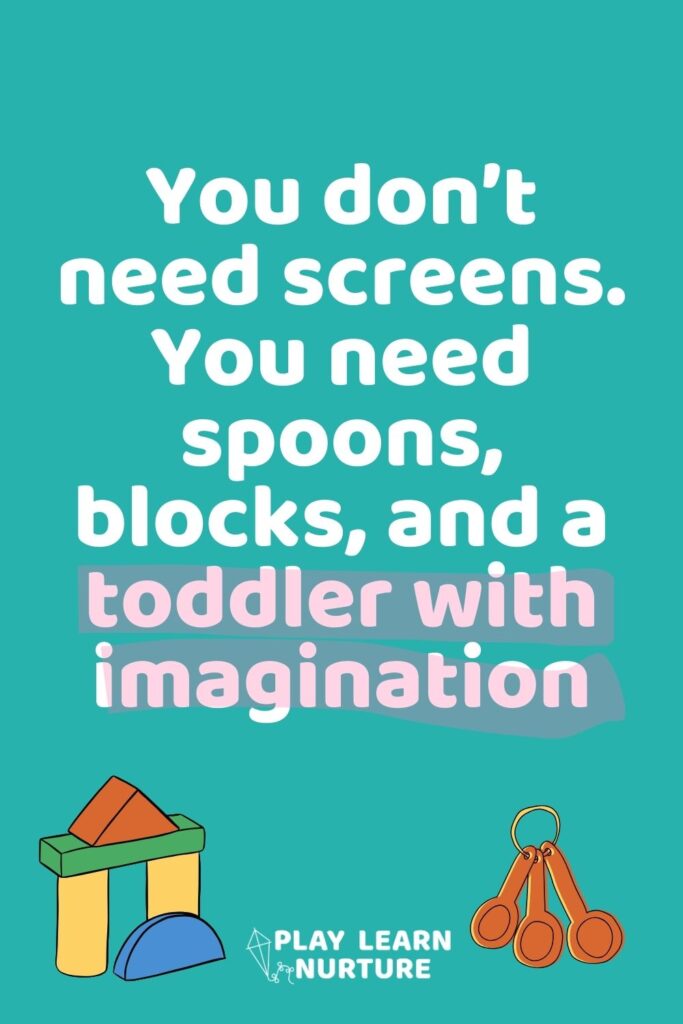
You’ve got the screen free play ideas. But what happens when you try to swap the iPad for a cardboard box and your toddler looks at you like you’ve lost your mind?
Totally normal.
Screens give instant dopamine. Play takes a bit of warming up — but the long-term rewards are so worth it. Here’s how to make the transition smooth (ish), doable, and tantrum-resistant.
Suddenly announcing “no more screens ever!” is a surefire way to create tantrum central. Start small:
Swap out one screen session per day for a screen free play idea
Keep it consistent: same time, same space
Set a timer if that helps with transitions
You can’t expect your child to play independently if the room is full of overstimulating, noisy, dead-end toys.
Try this:
Clear out 70% of the toys
Display 4–6 open ended play items
Create a “yes space” that feels like it’s theirs
Read more: Coming soon – How to Set Up an Independent Play Corner (Even in Small Spaces)
Kids love to know what’s coming. Use simple, clear cues:
“After snack is playtime”
“First puzzle, then story”
“iPad goes away, now it’s magnet time!”
Bonus: Make a visual chart if your toddler’s very routine-driven.
The first few days will be rough. Your child might whine. Wander. Ask for screens 27 times in an hour. That’s okay.
Boredom is the bridge to imagination.
Once they realise you’re not jumping in to fill the gap — their brain kicks into gear.
Read more: Coming soon -Daily Independent Play Routine That Builds Focus and Confidence
You don’t need to sit down and build block towers for 45 minutes. But showing interest — “Oh wow, you made a rainbow zoo!” — helps reinforce that their play matters.
Let them lead. Just be nearby. That’s more than enough.
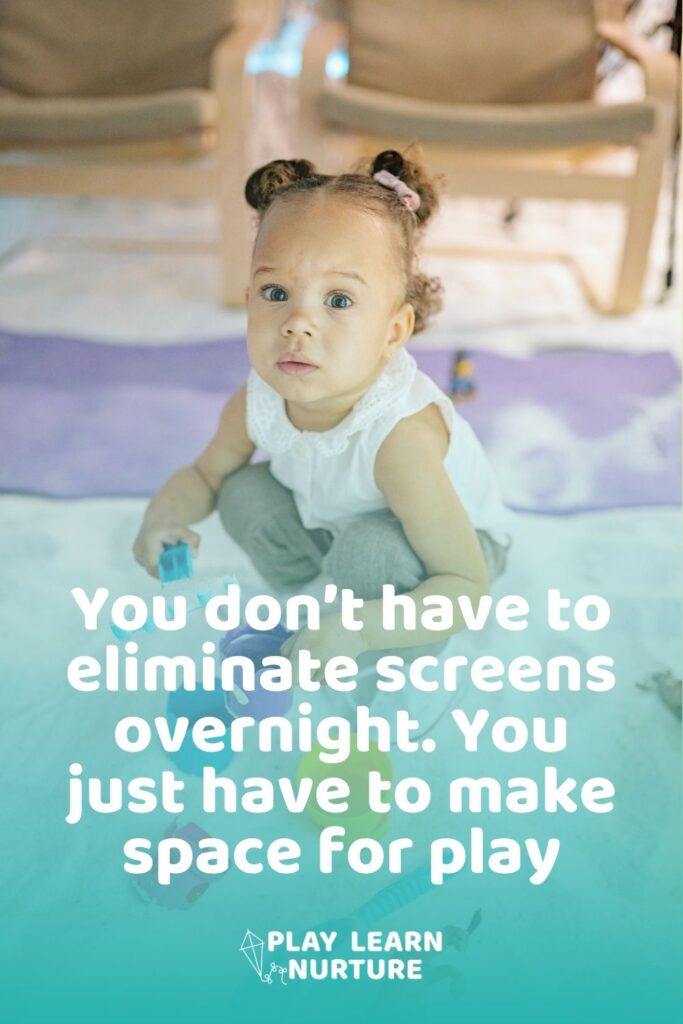
You don’t have to ditch screens completely. Start small. Replace one screen session with one open ended, screen free activity — even just 10 minutes.
Real-mum tip:
Try it when your toddler’s already fed, rested, and not overstimulated. You’re setting them up to succeed.
Kids thrive on routine. Create a mini schedule where screen free play always follows a consistent anchor:
After snack
After morning cuddles
After outside time
Use simple language like:
“After snack is playtime. What will you build today?”
Read more: Coming soon -Daily Independent Play Routine That Builds Focus and Confidence
Your job isn’t to entertain. It’s to be present enough that your child feels supported without you doing everything for them.
Set up the activity, then sit nearby with a coffee, folding laundry, or pretending to check your email.
You’re available, not directing.
That first wave of “I’m boooored” isn’t failure — it’s their brain rebooting. Most kids will push through boredom and start to invent something new if you give them a few minutes.
Let it get uncomfortable. That’s where imagination kicks in.
Keep 5–6 go-to activities that you know your child enjoys. Rotate them. Refresh them with new materials. Keep it flexible, simple, and easy to grab.
Having these ready prevents the “I don’t know what to do” spiral — for you and your toddler.
Read more: Coming soon -Minimalist Toy Guide: Essentials for Open Ended Play

The best screen free play ideas are simple, open ended, and child-led. Think magnetic tiles, blocks, dramatic play setups, loose parts, or even a cardboard box. These ideas allow toddlers to explore, build, imagine, and problem-solve — all without needing a screen or an adult constantly guiding the activity.
Start small. Offer just one or two open ended toys in a calm environment. Sit nearby, but let them take the lead. Toddlers often need a few minutes of “I’m bored” before they shift into creative mode. Use phrases like, “What could you build today?” to spark their thinking without taking over.
Read More How to Start Independent Play and Finally Enjoy 5 Minutes of Peace
Yes — truly. While it might feel counterintuitive, giving your child space to engage in self-led, screen free play can actually help them regulate emotions better. It builds patience, confidence, and resilience over time. Plus, screen overstimulation is often linked to meltdowns, so this is a healthier swap.
That’s normal, especially if screens have become a default comfort. The key is not to shame or punish, but to gently start offering alternatives. Swap out one screen session a day with a screen free play idea that feels fun and interesting. Over time, their tolerance for self-led play grows — promise.
Most toddlers can work up to 20–45 minutes of screen free play once it becomes routine. Start with 10 minutes and build gradually. Some days will be gold, some will flop — both are normal.
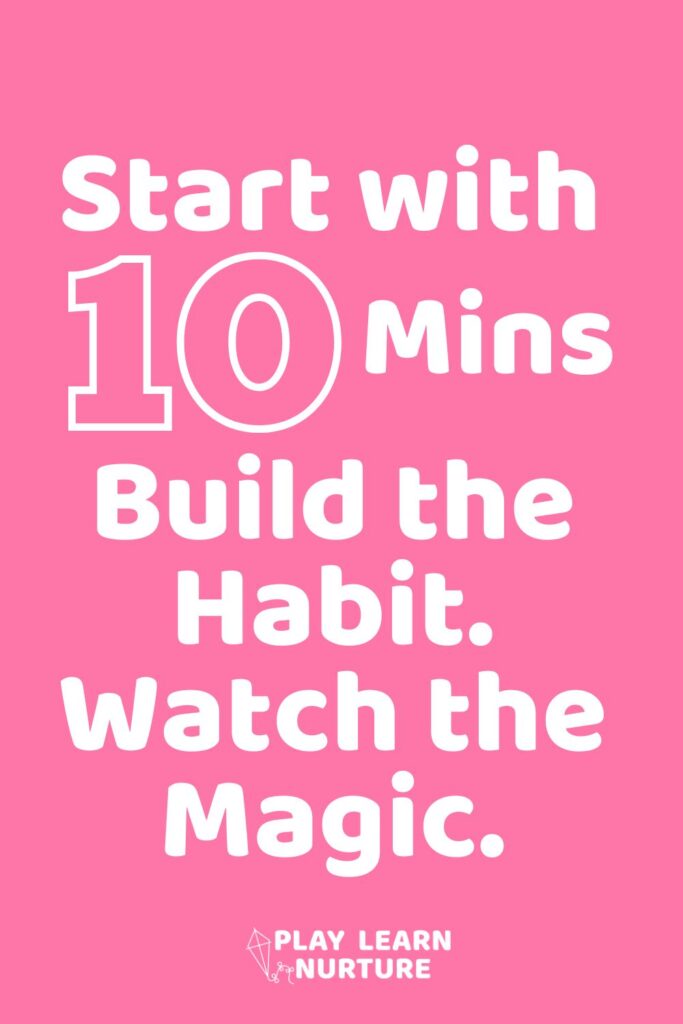
You don’t need to be screen-free. You don’t need to ban the iPad. And you definitely don’t need to create some Pinterest-worthy, stress-inducing schedule of curated toddler activities.
What you do need?
A few screen free play ideas that actually work. Ones your toddler enjoys. Ones that let you take a moment to breathe. Ones that build the kinds of skills a screen never could.
Because while screens can buy you peace in the moment, screen free play builds peace in the long run — confidence, independence, creativity, and self-regulation. All the things that make toddler life easier, not harder.
So tomorrow? Try just one.
Let them whine for a second.
Hold your nerve.
Then watch what happens.
They won’t ask you for more time on the iPad…
Because they’ll be too busy running a vet clinic out of a cardboard box.
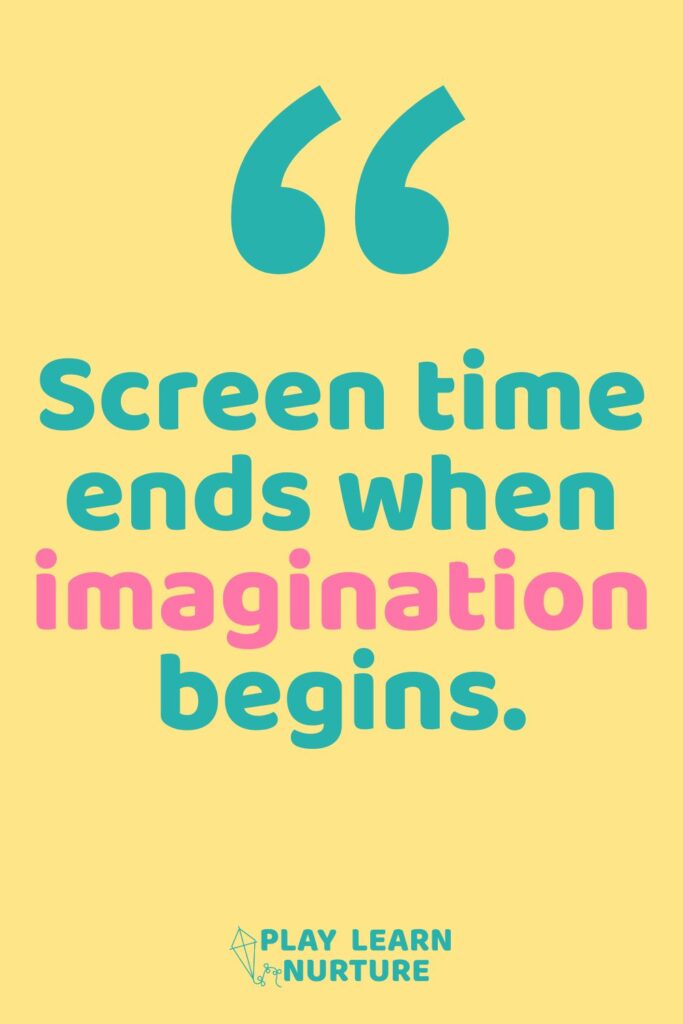

From magnetic tiles to dolls and pretend kitchens, these 15 toddler toys are actually worth the shelf space — and designed to encourage solo play and confidence.
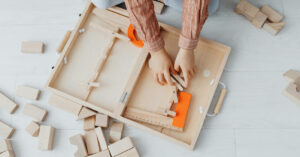
Delve into the world of loose parts play with our selection of toys that inspire exploration and innovation. Perfect for enhancing your toddler’s sensory and cognitive skills.

Simple, real-life play space ideas for toddlers that spark imagination, support independence, and give you a moment to breathe — no Pinterest-perfect setup required.

When the milk spills, the toddler tantrums, and your patience snaps before 9AM — you’re not failing. This is one mum’s story of surviving the messy mornings and finding connection in the chaos.
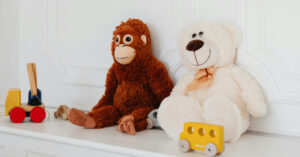
Discover how a simple toddler play schedule can create calmer days, boost independent play, and give you back precious breathing space — no strict routines required.

One chaotic morning, I realised the tension in the house wasn’t just coming from my toddler — it was coming from me. This is the story of how I stopped fuelling the chaos and started checking my own emotional thermostat first.